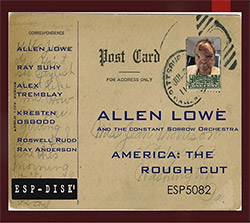
Saxophonist Allen Lowe's statement on American music and American song form across the many genres and styles that make up the terrain, including jazz, the blues, gospel, honky tonk, heavy metal, hillbilly/minstrel song & medicine shows, &c.; diverse forms of popular music that reflect a commingled society, as Lowe blurs the sacred and the profane with a stellar ensemble of musicians.
In Stock
Quantity in Basket: None
Log In to use our Wish List
Shipping Weight: 3.00 units
EU & UK Customers:
Discogs.com can handle your VAT payments
So please order through Discogs
Sample The Album:
Allen Lowe-tenor saxophone, alto saxophone, guitar
Ray Suhy-guitar, banjo
Alex Tremblay-bass
Kresten Osgood-drums
Roswell Rudd-trombone
Ray Anderson-trombone
Jay Randall Sandke-trumpet
Lewis Porter-piano
Jake Millett-electronic drums
Jessie Hautala-bass
Darius Jones-alto saxophone
Click an artist name above to see in-stock items for that artist.
UPC: 825481508223
Label: ESP-Disk
Catalog ID: ESPDISK 5082CD
Squidco Product Code: 33133
Format: CD
Condition: New
Released: 2023
Country: USA
Packaging: Digipack
Recorded at Firehouse 12, in New Haven, Connecticut, on March 22nd, 2022, by Greg DiCrosta; and in September, 2022, by Allen Lowe. Track 13 recorded in 2014.
"Allen Lowe writes:
"America: The Rough Cut is my statement not only on American music and American song, but also my commentary on the way American musicians of all styles handle that old-time music and those old song forms . . . The old things -- not just the blues, but gospel music and pre-blues shouts and language, plus hillbilly/minstrel song and medicine show irony -- reflect a disinterest in the polite trappings of (primarily but not only white) society, an implicit rejection of basic tonal, sonic, and harmonic rules.
'Noise' has, over a long time, come to be an accepted creative strategy for many musicians, with diminishing results. What is missing is...funk? Maybe, but not in that slick, drum machine, '80s way (the 1950s and 1960s, not to mention the 1920s, are another matter). What is missing is the funk from Funky Butt Hall of New Orleans, the sweat of the churchgoing gyrations of white and black Holy Rollers and the eccentric movements and sounds of attendants of the Pentecostal Church; not to mention the religious screams of white and black folk in the throes of post-rational bursts of tongues and trembling worship; or the ecstatic eternal protest of the Church of God in Christ ...
I live in a musical world (mostly in my head) in which the sacred and the profane are two sides of the same coin, and in which the blues is more effect than cause. As for most revivalists and folkies, well, they tend to sound (like most but not only jazz musicians) overqualified; there are some very satisfying exceptions to these rules, and I have tried to reflect that in America: The Rough Cut.
So here we have gospel formulations ('Damned Nation'), pre-blues ruminations ('Full Moon Moan'), a little bit of Hank Williams-directed honky tonk ('Cheatin' My Heart'), heavy metal ('Metallic Taste', 'Blues in Shreds'), 'Poor Mourner's Serenade' (hail, hail Jelly Roll Morton), 'Hymn for Her' (to my savior, and wife, Helen); a little bit of my own statement on the fallibility of free jazz, dedicated to a certain guitar player who shall remain nameless ('Blues for Unprepared Guitarist') in which, overdubbed on guitar, I make a personal appeal for a MacArthur, while daily sitting by the door, waiting for that envelope.
There's also 'Old Country Rag,' an evocation of the old-time hillbilly rag; 'Eh Death,' a variation on an old fear; 'It's the End,' a bit of autobiography; 'Cold was the Night, Dark Was the Ground" (and I was the first, back in the 1990s, to reference Blind Willie Johnson in a jazz way; here is my update); and 'At a Baptist Meeting,' recorded in concert some years ago with the late, great, grievously missed Roswell Rudd."-ESP-Disk
Artist Biographies
• Show Bio for Allen Lowe "Allen Lowe grew up in Massapequa Park, New York in the late 1950s and early 1960s. He started playing saxophone in jazz groups at age 15 and had some of his first jazz experiences, as a teenager, at the legendary Lower East Sideclub Slugs, seeing Ornette Coleman's band and Charles Mingus, among others. Coming of age at the end of the 1960s he also saw groups like Super Session (Mike Bloomfield, Al Kooper), the Grateful Dead (at their first Central Park concert in 1967), the Mothers of Invention (at Columbia University, 1968). Not to mention Louis Armstrong at Freedomland, circa 1964. When his young band (with guitarist Joel Perry) was booked for a festival in Bedford Stuyvesant circa 1968, they turned out to be one of the opening acts for the comeback appearance of Eubie Blake. After he dropped out of college in the middle 1970s Lowe returned to New York City, at a time when jazz was in something of an eclipse. He befriended a few veterans of the bebop era, like Al Haig, Curly Russell, Bill Triglia, Percy France, Dick Katz, Dave Schildkaut, and Tommy Potter. He even spent an odd afternoon with Lenny Tristano at Tristano's house in Jamaica Estates, became good friends with Barry Harris and Bob Neloms, got to know Jaki Byard while writing for a Boston music publication, and, in this same capacity, had some strange adventures one afternoon in Boston with Art Pepper. Lowe had long since stopped performing, and by the time he picked up the saxophone again in the early 1980s he was living in New Haven Connecticut (by way of a brief attendance at the Yale School of Drama), where he became active in the local jazz scene with musicians like the bassist Jeff Fuller and drummer Ray Kaczynski. Originally an unreconstructed bebopper, he gradually became more and more interested in what was then known as "new music," and began composing, performing and recording more actively in the new idiom. He was in contact with musicians like Julius Hemphill, Don Byron, David Murray, Doc Cheatham, Roswell Rudd, Loren Schoenberg, Jimmy Knepper, Randy Sandke, and others, all of whom subsequently played or recorded with Lowe's bands. During this time Lowe recorded 2 compact discs at the Knitting Factory (with Murray, Cheatham, Hemphill, Schoenberg) as well as sessions for Enja and Music and Arts (with Ben Goldberg, Randy Sandke, Roswell Rudd) - and on the Music and arts Album he performed what turned out to be the first jazz interpretation of Blind Willie Johnson's Dark Was the Night, Cold Was the Ground. In 1990 Lowe began working for the Mayor of New Haven, and became Director of Jazz New Haven, the yearly summer free outdoor festival held on the New Haven Green. He ran the festival for three years, booking musicians like Tony Williams, Max Roach, Jaki Byard, Tito Puente, Freddie Hubbard, Joe Lovano, Randy Brecker, Ray Barretto, and James Moody. In 1996 he moved to South Portland Maine, and what followed was a period of involuntary musical retirement. There was little musical work, no interest in his music, and a local arts scene dominated by folk music, retro-Indie Rock, and people under the age of 30. Out of sheer boredom he took up the guitar and began composing again, and also taught himself the technique of sound restoration. During this time Lowe wrote 4 books - American Pop from Minstrel to Mojo (a survey of American music from 1896-1946, published by Cadence and issued with a 9 CD set); That Devilin' Tune: A Jazz History 1900-1950 (published by Music and Arts and issued with a 36 CD set); God Didn't Like It: Electric Hillbillies, Singing Preachers, and the Beginning of Rock and Roll, 1950-1970 (unpublished); The Lost Generation: Jazz of the 1950s (unpublished); and then, most recently, Really the Blues? A Blues History, 1893-1959 (with a 36 CD set and 80,000 words of notes). For all of these that were issued with compact discs sets Lowe did all mastering and sound restoration, and also began doing freelance sound work, for Rhino, Shout, Rykodisc, Sony, Michael Feinstein, Terry Gross (Fresh Air), Venus Records, and others. The last two historical reissue projects he has done (That Devilin Tune and Really the Blues?) remain as two of the largest independent projects ever done on the history of American music, and were completed without any outside, institutional support. As a result of all of this one reviewer called Lowe "the Harry Smith of the 21st century." Greil Marcus remarked that "Lowe has made a substantial contribution to American culture, and all of those who want to see our musical history whole are in his debt." John Szwed commented that "Allen Lowe has forced us to rethink everything we 'know' about jazz - but I'll add that he's also forced us to question what we know about pop, country, and the blues as well. He has historicized pop music brilliantly...and the fact that he did it, and not one of the 'big' recording companies who are sitting on treasures of American music, is all the more astonishing. This collection should be in every household, or at the least in every library and school. Bravo! Encore!" In the meantime, Lowe began doing yearly lectures on various musical topics and moderating panels at the Rutgers Institute of Jazz Studies and the annual EMP Pop Conference in Seattle, Washington. He also lectured for the United States Information Agency in Europe. His books were used in courses at both Harvard and Yale, and entries appeared on him in the New Grove Dictionary of Jazz and The Penguin Guide to Jazz on Compact Disc. There is also an entire chapter on him in the book Bebop and Nothingness, by Francis Davis. Finally, around 2001, Lowe began playing and recording again, on both guitar and alto saxophone. In 2007 he recorded a disc with Matthew Shipp, Lewis Porter, Randy Sandke, Marc Ribot, Scott Robinson, and Erin Mckeown. A mix of jazz, punk rock, and American roots music, it received little national notice, but high praise from the likes of Anthony Braxton "Allen Lowe is a great writer. It's hillbilly music but it's trans-national. Allen Lowe is one of the few musicians doing anything new today. He is the tradition. I'm a big fan of Allen Lowe and I think as a musician and a scholar he is very important and I think he is deeply misunderstood because he doesn't hate himself" and led to Lowe's inclusion in a book called Jazz Jews (Mike Gerber, Five Leaves Publications) in which it was advised that Lowe "extracts the most soulful sounds out of a synthesizer since Steve Wonder, composes ambient-evocative instrumentals, and songs with vernacular lyrics that stick in the mind like those of Bob Dylan, Woody Guthrie, Mose Allison or Lou Reed." An uncomfortable encounter in 2008 with Wynton Marsalis led to Lowe's current project/obsession, the reissue Really the Blues? A Blues History 1893-1959 (see above) as well as a recording project and New York concert of his own music based on the blues and its various related forms. He has been recording in the last year with Matthew Shipp, Marc Ribot, Lewis Porter, Randy Sandke, and Roswell Rudd, and is currently rehearsing a new Portland-based group in a series of blues and blues variations that also touch on gospel and other forms of street-music." ^ Hide Bio for Allen Lowe • Show Bio for Ray Suhy "Hailing from Biddeford, Maine, and currently residing in Asbury Park, New Jersey, bandleader Ray Suhy is an accomplished and versatile guitarist whose playing style spans multiple genres. While Ray grew up playing classic rock, blues and metal, he gravitated towards jazz in his teen years after hearing John Coltrane for the first time. Ray continued to hone his skills by attending Berklee College of Music and The New School Jazz Program. Ray also studied jazz improvisation and theory privately with Charlie Banacos for over ten years. After college, Ray toured with the bands Colepitz and The Baltic Sea before joining up with East Of The Wall, touring and recording with them from 2011 to 2015. Ray has recorded as a sideman on free jazz records with the likes of Allen Lowe, Matthew Ship and Lewis Porter. Ray is currently touring and performing with Seasons Of Mist and Dangerous Muse, a 1980s style electro pop band. Ray is also an in-demand New Jersey session guitarist and has been a private guitar instructor for more than 25 years." ^ Hide Bio for Ray Suhy • Show Bio for Alex Tremblay "Born and raised in North Providence RI, Alex Tremblay found his passion in music at a young age. He came from a family of musicians which enabled him to hone his craft at a young age and would eventually lead him to further his studies at the Hartt School of Music at the University of Hartford, where he was a student of the schools renowned jazz department that was founded by the legendary Jazz Saxophonist/Composer, Jackie McLean. It was there that he met an studied with one of his bass heroes, Professor Nat Reeves. After completing his studies in 2013 he moved to New York City to continue to study, grow, and perform. Since moving to New York his most recent teachers have been Larry Grenadier and Gregg August. He currently resides in Brooklyn and is an active member of the music community in and around New York City. He has performed at many well known New York venues as well as venues abroad such as, The Cotton Club (Tokyo), Jazz at Lincoln Center, The Iridium, BB King's, Minton's, The Cutting Room, Shanghai Jazz, The Kitano, Smoke Jazz Supper Club, Smalls Jazz Club, Fat Cat, Sleep No More, Bar Next Door, SubCulture, and Terra Blues. He has also performed with the likes of Jerry Dodgion, Bennie Wallace, Lew Tabackin, Jonathan Barber, Jovan Alexandre, Gary Smulyan, Johnny O' Neal, Larry Willis, Donald Vega, Pete Malinverni, Shawnn Monteiro, Steve Davis, Winard Harper, David Schnitter, Lawrence Clark, Philip Dizack, Jumaane Smith, Khalili Kwame Bell, Antoinette Montague, Josh Evans, Solomon Hicks, Highline Chamber Ensemble, Billy Drummond, Don Hahn, John Mosca, and Ralph LaLama." ^ Hide Bio for Alex Tremblay • Show Bio for Kresten Osgood "Kresten Osgood is one of these people who at the same time defy and totally own categories. An extraordinary drummer and improviser who with the fullest respect to tradition, challenges it at any given moment of his creative endeavors. He has about a 100 albums to his credit, toured practically everywhere, has been performing and/or recording with legends like Roscoe Mitchell, Paul Bley, Lee Scratch Perry, William Parker, Masabumi Kikuchi, Derek Bailey, Wadada Leo Smith, Jason Moran, Michael Blake, Oliver Lake, Kurt Rosenwinkel, John Tchicai, Tim Berne, Justin Vernon, Peter Brötzman, Joshua Redman, Eugene Chadbourne, Billy Preston, Alan Silva, Brad Mehldau, Mats Gustafsson, Bennie Maupin, The National, Dr. Lonnie Smith, Sam Rivers, Henry Grimes, Dr. Yusef Lateef, Warren Smith, and many many others. But even that doesn't really cover the full spectrum of what he has been up to in his career. A successful rapper, composer, pianist, vocalist, saxophonist and trumpeter, a true multi-instrumentalist, a powerful organizer being an extremely important driving force in lifting and pushing the music life in Copenhagen forward, entertainer with his own shows in TV and radio, receiver of numerous awards and honors, A very sharp kaleidoscope man, regardless of the context always realizing his fullest potential. Kresten has been involved in a 17 part series about the history of danish jazz. a podcast released by the Danish National radio." ^ Hide Bio for Kresten Osgood • Show Bio for Roswell Rudd "Roswell Hopkins Rudd, Jr. (born November 17, 1935) is an American jazz trombonist and composer. Although skilled in a variety of genres of jazz (including Dixieland, which he performed while in college) and other genres of music, he is known primarily for his work in free and avant-garde jazz. Since 1962 Rudd has worked extensively with saxophonist Archie Shepp. Rudd was born in Sharon, Connecticut. He attended the Hotchkiss School and graduated from Yale University, where he played with Eli's Chosen Six, a dixieland band of students that Rudd joined in the mid-'50s. The sextet played the boisterous trad jazz style of the day and recorded two albums, including one for Columbia Records. His collaborations with Cecil Taylor, Archie Shepp, John Tchicai, and Steve Lacy grew out of the lessons learned while playing rags and stomps for drunken college kids in Connecticut. Rudd later taught ethnomusicology at Bard College and the University of Maine. On and off for a period of three decades, he assisted Alan Lomax with his world music song style (Cantometrics) and Global Jukebox projects. In the 1960s, Rudd participated in free jazz recordings such as the New York Art Quartet; the soundtrack for the 1964 movie New York Eye and Ear Control; the album Communications by the Jazz Composer's Orchestra; and in collaborations with Don Cherry, Larry Coryell, Pharoah Sanders, and Gato Barbieri. Rudd has had lifelong friendships with saxophonists Archie Shepp and Steve Lacy and has performed and recorded the music of Thelonious Monk with Lacy. Rudd and his producer and partner Verna Gillis went to Mali in 2000 and 2001. His album MALIcool (2001), a cross-cultural collaboration with kora player Toumani Diabat and other Malian musicians, represented the first time the trombone had been featured in a recording of Malian traditional music. In 2004, he brought his Trombone Shout Band to perform at the 4th Festival au Dsert in Essakane, Tombouctou Region, Mali. In 2005, he extended his reach further, recording an album with the Mongolian Buryat Band, a traditional music group of musicians from Mongolia and Buryatia, entitled Blue Mongol. Rudd conducts master classes and workshops both in the United States and around the world." ^ Hide Bio for Roswell Rudd • Show Bio for Ray Anderson "Ray Anderson has been continually noted as a contributor to the legacy of the slide trombone since his emergence in the 1970's, having won numerous Down Beat Critics Polls. He has shown remarkable musical range on the slide trombone and as a result reawakened interest in the instrument's expressive possibilities and sonic scope. He has led or co-led and composed for a daunting assortment of projects including tradition-minded ensembles, experimental groups, big bands, blues and funk projects and even a trombone quartet. He has performed and recorded with Anthony Braxton, David Murray, Charlie Haden's Liberation Music Orchestra, Dr. John, the George Gruntz Concert Jazz Band, Luther Allison, Bennie Wallace, Henry Threadgill, John Scofield, Roscoe Mitchell, the New York Composers Orchestra, Sam Rivers' Rivbea Orchestra and countless others. Anderson is a gifted teacher and has been the Director of Jazz Studies at Stony Brook University since 2003. Anderson has received grants from the National Endowment for the Arts, the Fund for U.S. Artists at International Festivals, the Oberon Foundation and Chamber Music America. In 2001 he became a John S. Guggenheim Fellow." ^ Hide Bio for Ray Anderson • Show Bio for Jay Randall Sandke "Jay Randall Sandke (born May 5, 1949 in Chicago, Illinois) is a jazz trumpeter and guitarist. While a student at Indiana University in 1968, he and Michael Brecker started a jazz-rock band (Mrs. Seamon's Sound Band) that performed at the Notre Dame Collegiate Jazz Festival. He was invited to be a member of the backing band for rock singer Janis Joplin, but a throat problem kept him from performing. Despite a successful operation on his throat, he gave up the trumpet, moved to New York City, and played guitar for the next ten years. When he returned to the trumpet, he became a member of the Nighthawks Orchestra led by Vince Giordano, followed by membership in Bechet's Legacy led by Bob Wilber. From 1984-1985, he was part of Benny Goodman's last band.[1][2] Sandke remarks in the liner notes to The Subway Ballet: "Okay - I worked with Benny Goodman, but so did Fats Navarro and Herbie Hancock and nobody refers to them as 'swing musicians.' ...Being thus labeled is somewhat akin to being called a child molester in that the tag never seems to go away, and both can be equally deleterious to one's career." He has recorded over twenty albums as a leader, ranging from revisitings of music from the 1920s and 1930s to explorations of contemporary idioms in the company Michael Brecker, Kenny Barron, Marty Ehrlich, Bill Charlap, and Uri Caine. He became interested in exploring dissonant, nonstandard harmonies that lie outside of conventional triadic harmony, creating a musical theory of what he calls "metatonality", a harmonic system outlined in his book Harmony for a New Millennium.[3] He has led the New York All-Stars with Dan Barrett and Ken Peplowski, the Metatonal Band with Marvin Smith and Ted Rosenthal, and has done arrangements for the Carnegie Hall Jazz Orchestra. His writings include a method book about his "metatonal" approach to harmony. He has a brother, Jordan Sandke, who is a trumpeter. Both brothers played in the Widespread Depression Jazz Orchestra.[2] His albums include Trumpet After Dark, a jazz-with-strings album that uses Renaissance viols instead of modern violins. Inside Out and Outside In bring together mainstream jazz musicians such as Ken Peplowski and avant-garde jazz musicians Ray Anderson and Uri Caine. His work appeared in the movies The Cotton Club, Bullets over Broadway, and The Curse of the Jade Scorpion." ^ Hide Bio for Jay Randall Sandke • Show Bio for Lewis Porter "Lewis Porter, pianist, keyboardist, and composer, appears on 30 albums with Dave Liebman, Marc Ribot, Gary Bartz and many others, and his 2018 album Beauty And Mystery features John Patitucci, Terri Lyne Carrington, and Tia Fuller. His latest are the exciting jazz-rock album Transcendent with guitar virtuoso Ray Suhy, on Sunnyside, and Solo Piano on the new label Next To Silence. AllAboutJazz writes that Porter's music draws from many sources to make "a beautifully creative whole" and that he is "a first-rate pianist," to which NYC Jazz Record adds that he has "a mind-boggling array of approaches at his ...fingertips." He received a Grammy nomination in 1995. He has performed across the USA and Europe with Liebman (who premiered one of Dr. Porter's saxophone concertos), Joe Lovano, Wycliffe Gordon, Ravi Coltrane, Ribot, and many others. Awarded a Ph.D. in musicology in 1983, he is well-known as a jazz educator, researcher, and author, most notably of a celebrated book on John Coltrane. A long-time former music professor at Rutgers in Newark and at Tufts U, he also taught at The New School, The Manhattan School of Music, NYU, William Paterson U, and Brandeis, as well as being a guest teacher throughout the USA and Europe. He also teaches private students worldwide by Zoom/Skype/Facetime/GoogleMeet, etc. Please follow him at Lewisporter.com and on Facebook." ^ Hide Bio for Lewis Porter • Show Bio for Darius Jones "Over the past decade, Darius Jones has created a recognizable voice as a critically acclaimed saxophonist and composer by embracing individuality and innovation in the tradition of African-American music. "Jones' concept is proudly his own," writes Philip Clark in The Wire. [His music] poses big questions about the relationship between the African-American tradition of spirituals, blues and gospel, and now." With New York City as his base since 2005, Jones has brought his unique sound to dozens of cities around the United States, Canada and Europe. Jones early on established himself as a powerful voice in the jazz community and was nominated in 2013 for Alto Saxophonist of the Year, and for Up & Coming Artist of the Year two years in a row for the Jazz Journalists Association Jazz Awards. Jones was one of Jazz Times' Debut Artists of the Year for 2009 and was featured in the Wall Street Journal in 2011. In 2012 he was featured in DownBeat and on WBGO's The Checkout. Jones' 2012 release, Book of Mæ'bul (Another Kind of Sunrise) was listed among NPR's Best Top 10 Jazz Albums of that year. "Jones speaks through his alto in an original and unforced language," writes DownBeat's Joe Tangari. Critics have called him "robustly creative" (Nate Chinen, New York Times) and "one of NYC's most incisive and passionate saxists" (Time Out New York). AllAboutJazz.com reviewer Troy Collins writes, "Jones has set the stage for a winning series of albums designed to document his rise as one of the most impressive and unique voices of our time." More recently The New York Times named Jones among the Best Live Jazz Performances of 2017 for his Vision Festival performance with Farmers by Nature. Jones has collaborated with artists including Gerald Cleaver, Oliver Lake, William Parker, Craig Taborn, Jason Moran, Georgia Ann Muldrow, Trevor Dunn, Eric Revis, Mike Reed, Nasheet Waits, Orrin Evans, Branford Marsalis, Kris Davis, Vijay Iyer, Marshall Allen, Dave Burrell, James Carter, Harriet Tubman, JD Allen, Tyshawn Sorey, Andrew Cyrille, Yo La Tengo, Chad Taylor, Dan Weiss, Matt Mitchell, Ches Smith, Steve Lehman, Jim Black, Sun Ra Arkestra, Shazhad Ismaily, Fay Victor, Cooper-Moore, Imani Uzuri, Matthew Shipp and many more. Signed to AUM Fidelity records in 2009, Jones has released a string of diverse recordings which comprise his Man'ish Boy Epic, featuring music and images evocative of Black Futurism. In 2008 Jones was awarded the Van Lier Fellowship by Roulette, which he used to launch his chamber ensemble, the Elizabeth-Caroline Unit, a project dedicated to new works for voice. Roulette continued their support for Darius' work through a Jerome Foundation Commission, and he was a Jerome Artist-in-Residence when the Elizabeth-Caroline Unit premiered the first section of The Oversoul Manual, in the Spring of 2014. Jones made his compositional debut at Carnegie Hall with the same work in October of 2014. In March 2018, Jones presented a new composition entitled LawNOrder a dramatic commentary on social justice and American politics, at Willamette University in Salem, Oregon. In 2013, Jones was awarded the French-American Jazz Exchange grant for a collaboration with French vocalist Emilie Lesbros. Jones graduated from Virginia Commonwealth University with a Bachelors in Jazz Studies in 2003, earning a Master's Degree in Jazz Performance/Composition from New York University in 2008. He also taught New Music Improvisation there for a year as an adjunct professor. Jones taught saxophone and improvisation at Columbia University in 2017. Of note, Jones was featured in the Wall Street Journal and BBC's Jazz on 3 in 2011. In 2012 he was featured in the New York City Jazz Record, JazzTimes.com, the Village Voice Blog, DownBeat, and on WBGO's The Checkout. Darius was featured on the cover of Portuguese magazine, Jazz.pt in 2012, and on the cover of Italian magazine, Jazz Colours, in 2013. Darius' 2012 release, Book of Mæ'bul (Another Kind of Sunrise) was listed among NPR's Best Top 10 Jazz Albums of that year." ^ Hide Bio for Darius Jones
11/20/2024
Have a better biography or biography source? Please Contact Us so that we can update this biography.
11/20/2024
Have a better biography or biography source? Please Contact Us so that we can update this biography.
11/20/2024
Have a better biography or biography source? Please Contact Us so that we can update this biography.
Have a better biography or biography source? Please Contact Us so that we can update this biography.
11/20/2024
Have a better biography or biography source? Please Contact Us so that we can update this biography.
11/20/2024
Have a better biography or biography source? Please Contact Us so that we can update this biography.
11/20/2024
Have a better biography or biography source? Please Contact Us so that we can update this biography.
11/20/2024
Have a better biography or biography source? Please Contact Us so that we can update this biography.
11/20/2024
Have a better biography or biography source? Please Contact Us so that we can update this biography.
Track Listing:
1. Damnation 4:13
2. Cheatin' My Heart 4:49
3. Poor Mourner's Serenade 5:50
4. Cold Was the Night, Dark Was the Ground 5:10
5. Hymn for Her 4:30
6. It's the End 4:07
7. Full Moon Moan 4:56
8. Blues in Shreds 6:04
9. Eh, Death? 4:08
10. Blues for Unprepared Guitarist 4:12
11. Old Country Rag 4:08
12. Metallic Taste 4:47
13. At a Baptist Meeting 8:37
Improvised Music
Jazz
Free Improvisation
Rock and Related
Large Ensembles
NY Downtown & Metropolitan Jazz/Improv
New in Improvised Music
Search for other titles on the label:
ESP-Disk.


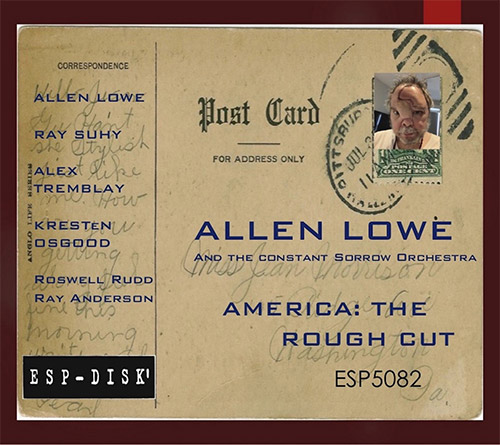

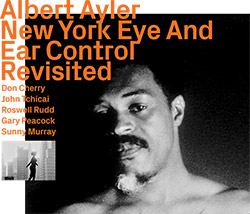




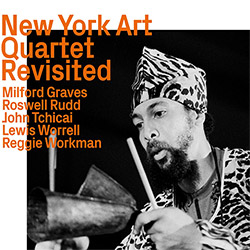
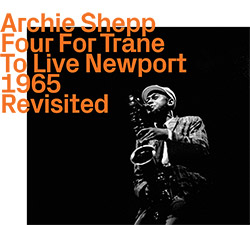
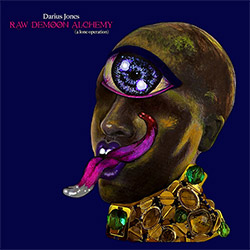
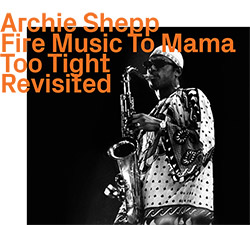




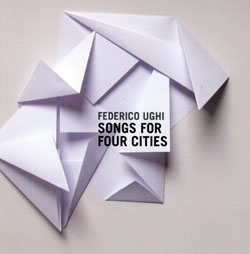
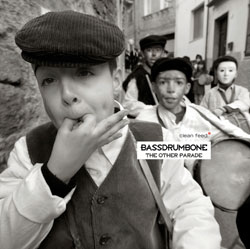
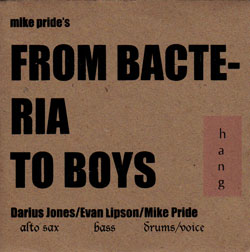
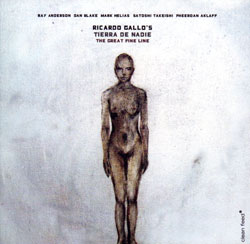


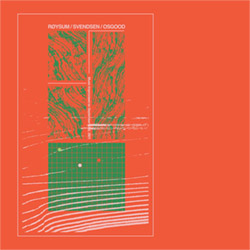
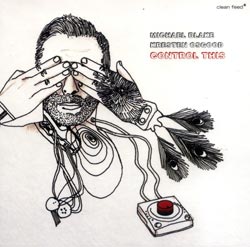

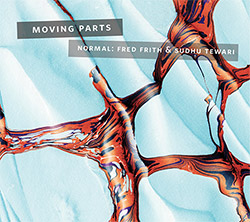


![Guy, Barry / Ken Vandermark: Occasional Poems [2 CDs]](https://www.teuthida.com/productImages/misc4/34849.jpg)
![Novoa / Carter / Mela Trio: Vol.1 [VINYL]](https://www.teuthida.com/productImages/misc4/35236.jpg)


![Elephant9 : Mythical River [VINYL]](https://www.teuthida.com/productImages/misc4/34624.jpg)
![Evans, Peter (Evans / Eldh / Black): Extra [VINYL]](https://www.teuthida.com/productImages/misc4/35279.jpg)

![McPhee, Joe: Straight Up, Without Wings [BOOK]](https://www.teuthida.com/productImages/misc4/35454.jpg)
![Jeck, Philip: rpm [2 CDs]](https://www.teuthida.com/productImages/misc4/35455.jpg)













![Barker / Parker / Irabagon: Bakunawa [VINYL]](https://www.teuthida.com/productImages/misc4/35533.jpg)
![Blaser, Samuel / Marc Ducret / Peter Bruun: Dark Was The Night, Cold Was The Ground [VINYL 10-inch]](https://www.teuthida.com/productImages/misc4/35492.jpg)








![Warren, Kenny (Warren / Hoffman / Ellman): Sweet World [VINYL]](https://www.teuthida.com/productImages/misc4/35451.jpg)




![Blake, Ran / Dave Knife Fabris: Live Amsterdam 2006, First Visit [CD + POSTCARDS]](https://www.teuthida.com/productImages/misc4/35275.jpg)













![DNS: Taking Big Bites Of The Khandas Three Cafes Deep [2 CDs]](https://www.teuthida.com/productImages/misc4/35334.jpg)




![Cleaver, Gerald: The Process [VINYL]](https://www.teuthida.com/productImages/misc4/34966.jpg)




![Alva Noto: HYbr:ID II [VINYL 2 LPs]](https://www.teuthida.com/productImages/misc4/35201.jpg)

![Baron, Derek / Luke Martin: Distinct and Concealed [CASSETTE + DOWNLOAD]](https://www.teuthida.com/productImages/misc4/35079.jpg)

![Lyle, Erica Dawn : Colonial Motels [CASSETTE + DOWNLOAD]](https://www.teuthida.com/productImages/misc4/35080.jpg)









![Sanna, Claudio: Compositori Sardi Contemporanei II [2 CDs]](https://www.teuthida.com/productImages/misc4/35317.jpg)







![Zurria, Manuel: Fame di Vento [3 CDs]](https://www.teuthida.com/productImages/misc4/35167.jpg)

![Granberg, Magnus / Nattens Inbrott / Skogen: Holde Traume, Kehret Wieder! [2 CDs]](https://www.teuthida.com/productImages/misc4/35038.jpg)
![Frey, Jurg: Outermost Melodie [2 CDs]](https://www.teuthida.com/productImages/misc4/35039.jpg)

![Pavone, Jessica: Reverse Bloom [VINYL]](https://www.teuthida.com/productImages/misc4/34895.jpg)




![Modney (Modney / Wooley / Gentile / Roberts / Pluta / Symthe / ...): Ascending Primes [2 CDs]](https://www.teuthida.com/productImages/misc4/34852.jpg)









![Elephant9 with Terje Rypdal: Catching Fire [VINYL 2 LPs]](https://www.teuthida.com/productImages/misc4/35355.jpg)
![Deerlady (Obomsawin, Mali / Magdalena Abrego): Greatest Hits [VINYL]](https://www.teuthida.com/productImages/misc4/34876.jpg)




![Haino, Keiji: Black Blues [2 CDs]](https://www.teuthida.com/productImages/misc4/35109.jpg)



![Surplus 1980: Illusion of Consistency [CD]](https://www.teuthida.com/productImages/misc4/35069.jpg)
![Staiano, Moe: Away Towards the Light [VINYL + DOWNLOAD]](https://www.teuthida.com/productImages/misc4/35037.jpg)



![Caveira (Gomes / Sousa / Abras / Ferrandini): Ficar Vivo [VINYL]](https://www.teuthida.com/productImages/misc4/34643.jpg)
![Gregg, J. J. / David Van Auken: Lunar Prairie [CD w/ DOWNLOAD]](https://www.teuthida.com/productImages/misc4/34611.jpg)

![Coultrain: Mundus [VINYL]](https://www.teuthida.com/productImages/misc4/32439.jpg)
![Mattin: Songbook #6 [VINYL]](https://www.teuthida.com/productImages/misc4/27317.jpg)
![Punkappella: Wake Up [7-inch VINYL]](https://www.teuthida.com/productImages/misc4/17519.jpg)
![Residents, The: WARNING: UNiNC.: Live And Experimental Recordings 1971-1972 [VINYL 2 LPs]](https://www.teuthida.com/productImages/misc4/31521.jpg)
![Coultrain: Phantasmagoria [VINYL]](https://www.teuthida.com/productImages/misc4/30142.jpg)
![Lennon, Sean Ono: Asterisms [VINYL]](https://www.teuthida.com/productImages/misc4/34517.jpg)

![Coley, Byron: Dating Tips for Touring Bands [VINYL]](https://www.teuthida.com/productImages/misc4/17906.jpg)

![Lost Kisses: My Life is Sad & Funny [DVD]](https://www.teuthida.com/productImages/misc4/lostKissesDVD.jpg)